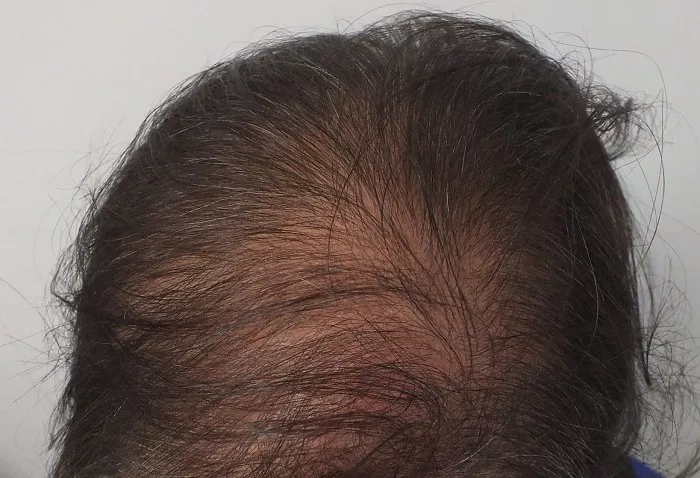Hair transplant surgery is a popular and effective way to restore hair loss and improve the appearance of thinning hair. However, one of the potential side effects of the procedure is shock loss, which is the temporary shedding of transplanted and existing hair. In this article, we will discuss what shock loss is, what causes it, and how long it typically lasts after hair transplant surgery.
What is Shock Loss?
Shock loss is a common side effect of hair transplant surgery that occurs when the transplanted hair follicles go into a dormant phase and stop growing. This can cause the transplanted hair to fall out, as well as some of the existing hair in the recipient area. Shock loss typically occurs within the first few weeks after the procedure and can last for several months.
During hair transplant surgery, hair follicles are taken from the donor area and implanted into the recipient area, where hair loss or thinning has occurred. The process of implanting the hair follicles can cause trauma to the surrounding hair follicles, which may cause them to temporarily stop growing and enter a resting phase. This can lead to the shedding of both the transplanted hair and some of the existing hair in the recipient area.
What Causes Shock Loss?
There are several factors that can contribute to shock loss after hair transplant surgery. Here are some of the main causes:
Trauma to the scalp:
One of the main causes of shock loss is the trauma that the scalp undergoes during the hair transplant procedure. The incisions made to implant the hair follicles can cause temporary damage to the surrounding hair follicles, leading to shock loss.
Natural hair growth cycle:
Hair goes through a cycle of growth, rest, and shedding. The transplanted hair follicles may be in a resting phase when they are implanted, and this can cause them to shed before they start growing again.
Implantation technique:
The technique used for hair transplant surgery can also affect the risk of shock loss. For example, the use of larger grafts or more aggressive implantation techniques may increase the risk of shock loss.
Extent of the procedure:
The extent of the hair transplant procedure can also affect the risk of shock loss. Patients who undergo a larger procedure with more grafts may experience more extensive shock loss than patients who undergo a smaller procedure.
Pre-existing hair loss:
Patients who have significant pre-existing hair loss may be more susceptible to shock loss after hair transplant surgery.
Patient factors:
Certain patient factors, such as age, overall health, and medications, can also affect the risk of shock loss.
How Long Does Shock Loss Last?
The duration of shock loss after hair transplant surgery can vary depending on several factors, including the patient’s individual hair growth cycle, the extent of the procedure, and the technique used. Here are some factors that can affect how long shock loss lasts:
The extent of the procedure:
The extent of the hair transplant procedure can affect the duration of shock loss. Patients who undergo a larger procedure with more grafts may experience more extensive shock loss, which can last longer than in patients who undergo a smaller procedure.
The technique used:
The technique used for hair transplant surgery can also affect the duration of shock loss. For example, FUT (Follicular Unit Transplantation) may be associated with more extensive shock loss than FUE (Follicular Unit Extraction) due to the nature of the incisions made during the procedure.
The patient’s individual hair growth cycle:
The patient’s individual hair growth cycle can also affect the duration of shock loss. Hair goes through a cycle of growth, rest, and shedding, and the transplanted hair follicles may be in a resting phase when they are implanted. This can cause them to shed before they start growing again.
Post-operative care:
Proper post-operative care is essential for ensuring safe and long-lasting hair transplant results, including minimizing the duration of shock loss. Patients should follow their surgeon’s instructions for caring for their hair and scalp after the surgery, including avoiding strenuous physical activity, using special shampoos and conditioners, and avoiding certain hair care products or styling techniques.
In general, shock loss typically lasts for several weeks to several months after the procedure. The initial shedding of transplanted hair usually occurs within the first two to four weeks after the procedure. This is a normal part of the healing process and is not a cause for concern. The hair will start to grow again after a few months, and patients can expect to see visible results within six to twelve months after the procedure.
Conclusion
In conclusion, shock loss is a common side effect of hair transplant surgery that occurs when the transplanted hair follicles go into a dormant phase and stop growing. This can cause the transplanted hair to fall out, as well as some of the existing hair in the recipient area. Shock loss typically lasts for several weeks to several months after the procedure, and patients can expect to see visible results within six to twelve months after the procedure. While shock loss can be a frustrating side effect, it is usually temporary and does not affect the long-term results of the procedure. Patients should follow their surgeon’s post-operative care instructions and be patient as their hair grows back.
Related Topics:

